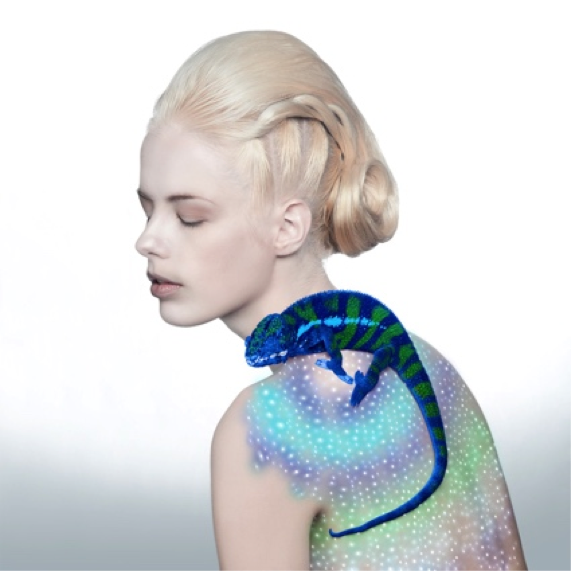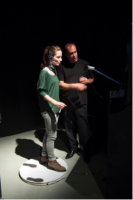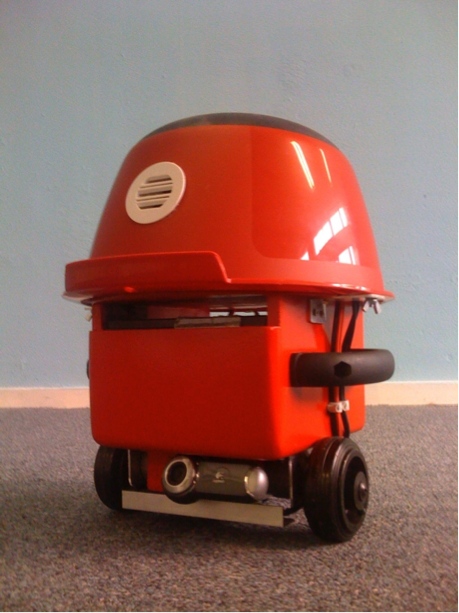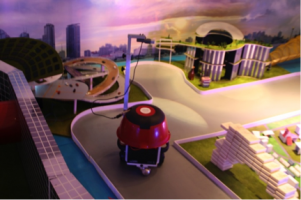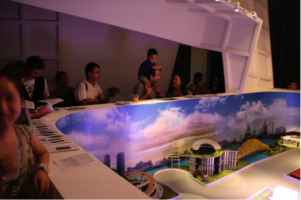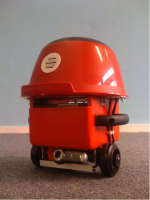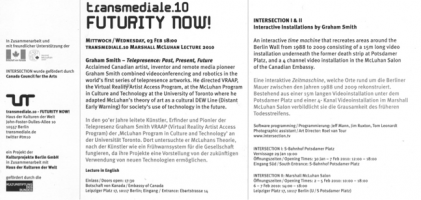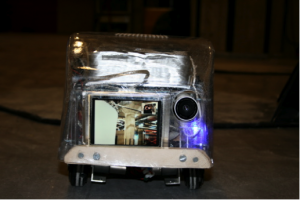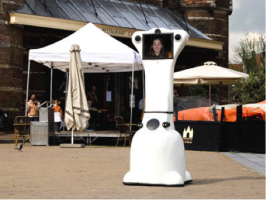DATE – 2012
DISCIPLINE – Art
MEDIUM – Interactive LED fabric done in collaboration with fashion designer Anouk Wipprecht
STATUS – Exhibited at Technosensual in Vienna, Austria
WEBLINKS
https://www.cnet.com/pictures/technosensual-crazy-catwalk-of-future-fashion-pictures/12/
http://v2.nl/events/technosensual
http://www.q21.at/en/artists-in-residence/artists/artistinfo/graham-smith-1/
http://www.q21.at/artists-in-residence/artists/artistinfo/graham-smith/
The “Chameleon Dress” is a joint project by Graham Smith and Anouk Wipprecht and is an interactive fashion initiative to create a new form of wearable clothing that changes color in relation to the environment it is placed in. The “Chameleon Coat” utilizes advanced LED, camera and fiber optic technologies in new ways that combine together to redefine how fabric interacts with its surroundings. The first version of the Chameleon Dress will utilize a live camera and miniature battery powered LED beamer connected to a bundle of 300 fiber optic cables which will transmit the color sensation of the environment to the fabric. The effect will mimic the way a real Cameleon reacts to its environment and will redefine the concept of what color something is by always changing and altering depending on where it is placed.

